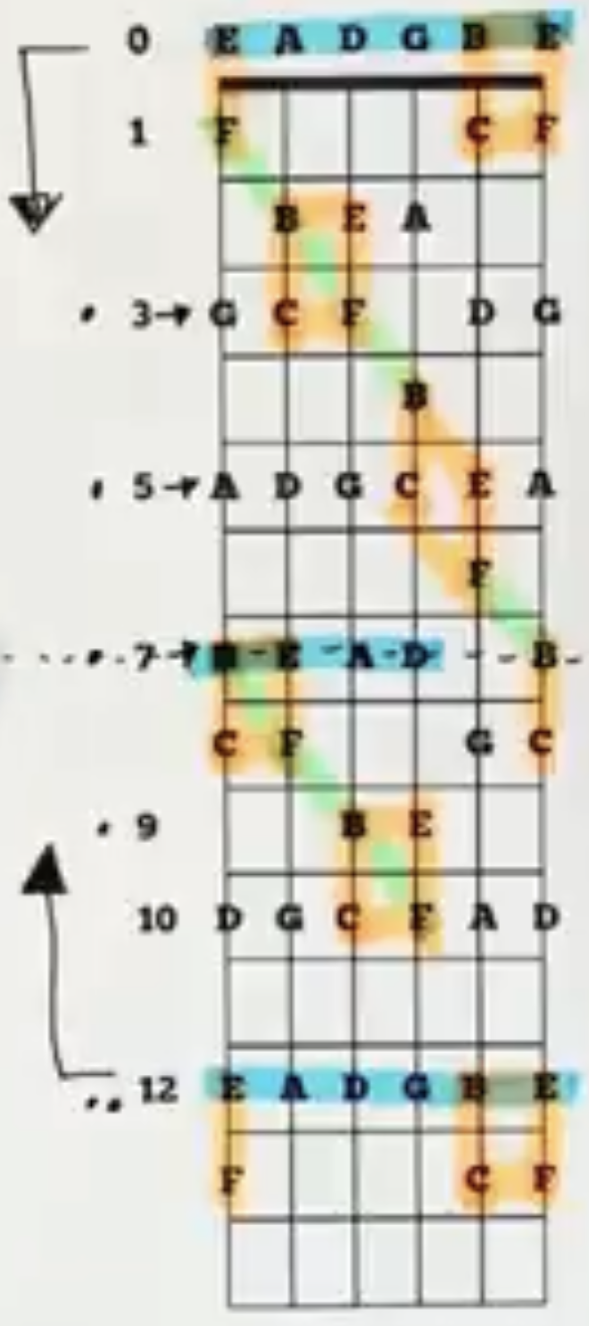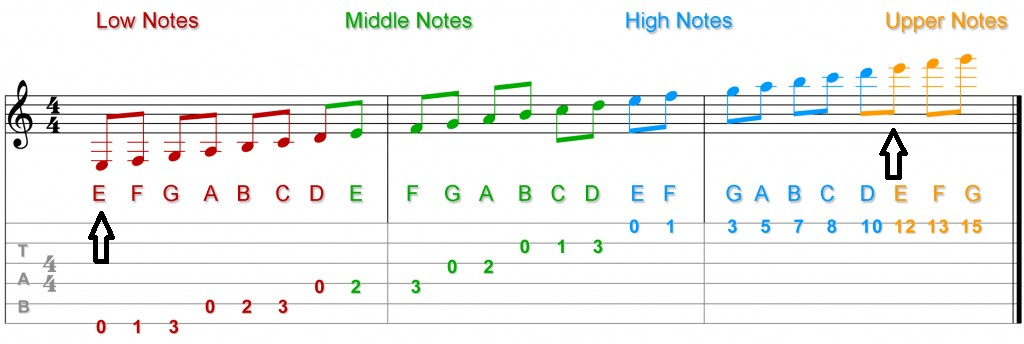Memorizing Fretboard
Empty-String Pattern
EADGBe
- High E and low E strings are equivalent in notes.
- The first 12 frets (0–11) repeat identically from the 12th fret onward (12–23).
Circle of Fifths Patterns

- Blue: Follows the circle of fifths — C → F → Bb → Eb → Ab → Db → Gb → B → E → A → D → G.
- Since the B string is tuned differently (a major third from the G string instead of a fourth), you need to shift patterns up by one fret on the B string to stay in key. The same applies to the low E in some patterns.
- Orange: Highlights the BC and EF half steps.
- Green: Diagonal pattern for FBFB.
What do "major third" and "fourth" mean?
- Most guitar strings are tuned in fourths: E → A → D → G (perfect fourth intervals).
- Example: E → F → Gb → G → A (4 semitones).
- B string exception: The interval from G to B is a major third — G → Ab → A → B (3 semitones).
From E2 to E6

On a 24-fret guitar, the pitch range spans from E2 to E6.
The treble clef staff typically covers a range from approximately E4 to F5 for piano, but for guitar, the notation spans E3 to F4, written an octave higher than it sounds.

Interval Structure
Assuming E(1st) A(2nd) D(3rd) G(4th) B(5th) E(6th),
From left to right:
- On the 1st to 4th strings, skipping one string, the same note appears two frets higher.
- Example: In a C5 power chord, the root note on the 5th string (C) is mirrored two frets higher on the 3rd string.
- On the B and low E strings, the same note appears three frets higher when skipping a string.
From right to left:
- For the 5th (B) and 6th (low E) strings, skipping two strings and shifting by two frets yields the same note.
- For the 4th (G) string, skipping two strings and shifting by three frets yields the same note.

All Pitches on All Strings
Practice finding a given note on all strings, either systematically or by following the circle of fifths.